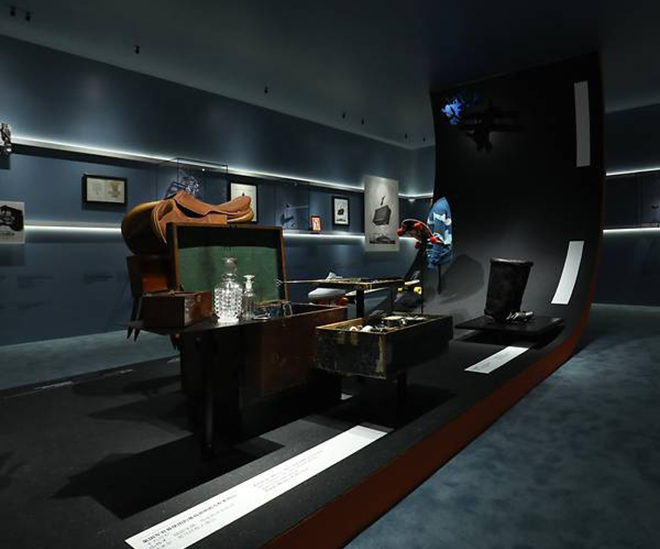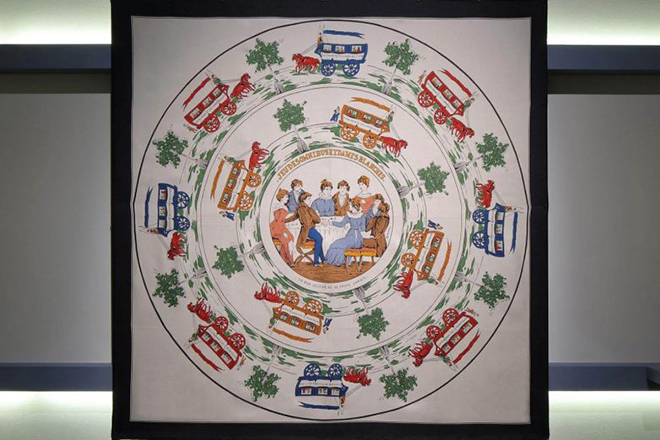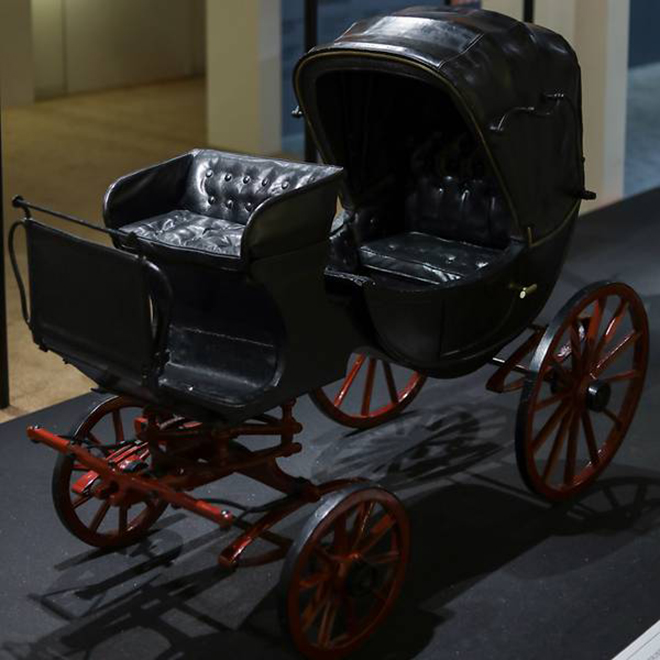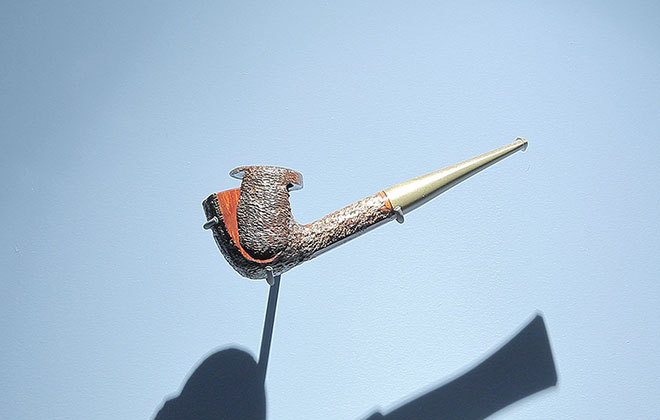Hermès Part Three: In Motion – a devotion to a heritage of excellence
For 182 years, Hermès has been managed by the same family. In Motion explores the concept of mobility and Hermès desire for perpetual refinement.

Most of us might know that the House of Hermès started out as saddle and harness makers. Despite its status as an ultra-luxury fashion house today, its equestrian epoch remain with Hermès in its spirit of continuous refinement and innovation.
Inside the grand sanctum of the Hermès boutique, I felt like a royalty, surrounded by unforetold opulence. Even the air was oozing with luxuriance—the scent was an intricate concoction of high-quality leather wares, citrusy-woodsy notes of the Hermèssences perfume collection edged by the immaculate wooden interior. I was then ushered upstairs to explore the Hermès’ Part Three: In-Motion exhibition series. Awe-struck was an understatement.
- Hermes Heritage – In Motion, took place from May 11 to 19 at Hermes Liat Towers.
- The Jeu des omnibus et dames blanches scarf.
- Haut À Courroies Bag
- A child’s goat carriage
- Hurricane Storm-Resistant pipe
The exhibition teleported me into the 19th century when Thierry Hermès carved out his niche as a saddler and harness maker for the European elites in 1837. At the largess of the Emile Hermès museum, which houses 15,000 articles in its repository atop the brand’s flagship store in Paris, the exhibition featured some of its most cherished archives from Emile Hermè travels in the Singapore boutique. Throughout the exhibition, the curator of the exhibition, Bruno Gaudichon, a matronly French lady, conscientiously emphasised that Hermès is a house that constantly reevaluates itself to anchor and reinvent the House in line with its rich equestrian heritage and values; a house whose authenticity prevailed over 182 years of operation across 6 generations.
The exhibits speak for themselves. Across an eclectic mix of contemporary and archival items, the pièce de résistance must be Hermès’ first silk scarf, The Jeu des omnibus et dames blanches scar, which was designed in 1937, depicting a scene of horse-drawn omnibuses which were France’s primal mode of transport. As Hermès repositions itself with the passing of time, the house does not abandon its seemingly obsolete equestrian heritage, but harnesses the spirit of the time into its modern creations.
- Artisans in the process of making a bag in The Ateliers Hermès, Pantin, France
- The Hermès Carré paired with an Hermès Birkin.
The secret lies in The Atelier Hermès in Pantin, France, where skilled artisans dedicate their virtuosity to every merchandise—belt, watches, bags, purse et cetera—from start to finish. As Hermès ex-CEO, Jean-Louis Dumas, puts it, “We don’t have a policy of image, we have a policy of product”. The Hermès 90cm X 90 cm Carré (scarf), which is often seen strapped Birkin bags or tied around necks of celebrities, is conceptualised by a team of veteran global designers and made of 450km of silk from 300 cocoons of the Bombyx Mori silk moth. And that is just the Carré. The iconic Birkin bags will take artisans more than 48 hours depending on the complexity.
Throughout the years, Hermès has steadfastly abided by their conviction of quality French handiwork, resisting the strong impetus to raise profit margins. Perhaps a common phenomenon in the luxury market today—rivals like LVMH outsourced the production of shoes to Romania before shipping them back to Italy for finishing, to scarcely qualify for the “made in Italy” label as stipulated by EU law. Concerning this fanatic devotion to details, Hermès’ Creative Director Pierre-Alexis Dumas said, “I think Hermès objects are desirable because they reconnect people to their humanity… Our customer feels the presence of the person who crafted the object, while at the same time the object brings him back to his own sensitivity, because it gives him pleasure through his senses”.

Executive committee from left to right : Pierre-Alexis Dumas, Wilfried Guerrand, Olivier Fournier, Charlotte David, Axel Dumas, Florian Craen, Eric du Halgouët
Timelessly fastidious to its cultural patrimony, it remains under the close guardianship of the Hermès family (holding 50.2% of the shares) and is currently helmed by Axel Dumas, the great-great-great-great-grandson of Thierry Hermès. More than just the physical qualification of Hermès, it is this elusive, closed-door nature of Hermès that tantalises its fans.

Unlike its rival, LVMH, which invested 42.9% of its $12.9 billion worth of sales revenue in 2017, Hermes expended merely 5% of its $6 billion worth of sales revenue on advertising. It could be that LVMH, with its impressive 70 luxury brands under its belt, requires a higher marketing expenditure, but the point still stands—Hermès pursues a subtle, yet finessed marketing strategy, meant for the refined lot who possesses the saviour-faire.
In fact, maybe unconventionally as well, Hermès rejects celebrity endorsements and restricts access of its merchandises. Core Hermès wares, like the Birkins and Kellys, are only available in their flagship boutiques, even then, don’t be surprised if you are put on the waitlist of one to two years. But before qualifying for the waitlist, you will need to rack up shopping bills with Hermès over several months (bulk purchase discounts are not a thing with Hermès). Further mystifying the already enigmatic brand, each Hermès flagship store features different off-the-shelf items that their store representatives gathered from the flagship Paris boutique at Rue du Faubourg. The result is a heightened sense of exclusivity which intensifies the demand for its merchandise and sets Hemès apart from its competitors.

L’artificier atop Hermès’ Paris flagship in 24 Rue du Faubourg Saint-Honoré. A replica of the statue can be found atop Singapore’s Hermès boutique at Liat Towers.
Having finished the exhibition, I left the boutique. I looked up at l’artificier, the valiant knight waving Hermès scarves atop a horse, poignant but enlightened—it was clear to me that Hermès has never the intention to be widely owned, it is meant for a deserving subset within the subset.
The acquisition of any Hermès ware is thus a timeless journey that connects the owner to the artisan, and more widely so, the brand’s ardour for superior craftsmanship; each product is reminiscent of Hermès’ equestrian beginnings and the reflection of their unabated dedication to their craft.
















